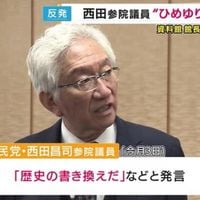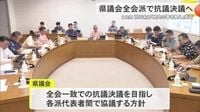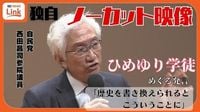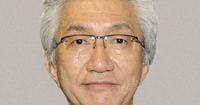On May 3, 2025, during a symposium in Naha City, Liberal Democratic Party (LDP) Upper House member Masaji Nishida made controversial remarks regarding the Himeyuri Tower, a memorial dedicated to students and teachers mobilized during the Battle of Okinawa in World War II. Nishida claimed that the narrative presented at the Himeyuri Peace Prayer Museum is "rewriting history." His statements have sparked significant backlash from various political factions and the public in Okinawa.
Nishida's comments included assertions that the museum's descriptions suggest that the Japanese army's actions led to the deaths of the Himeyuri unit, followed by the American forces liberating Okinawa. He stated, "The Japanese army came in and the Himeyuri unit ended up dying. Then America came in and Okinawa was liberated. They are writing it in that way. It’s rewriting history." These remarks have been met with fierce criticism, particularly from Okinawa's Governor Denny Tamaki, who labeled them as "outrageous statements that distort the reality of the Battle of Okinawa" and indicated that Nishida's understanding of the historical context is severely mistaken.
The Himeyuri Tower, which stands as a poignant reminder of the tragic loss of life during the Okinawa campaign, is designed to honor the memories of those who died. According to Choju Futenma, the director of the Himeyuri Peace Prayer Museum, there are no exhibits or descriptions at the tower that align with Nishida's claims. "There is absolutely no description or expression like what Nishida was saying in the exhibits or the testimonies of the survivors," Futenma asserted. This assertion underscores a significant disconnect between Nishida's comments and the museum's actual presentation of history.
In response to the uproar, Nishida held a press conference on May 7, where he attempted to clarify his remarks. He explained that his comments were intended to address the American occupation policy as a prerequisite for constitutional revision. Nishida expressed concern that the current narrative surrounding the Himeyuri Tower does not adequately reflect the complexities of Okinawa's history. He stated, "I strongly felt that the people of Okinawa would not be saved by the current narrative of the Himeyuri Tower." Furthermore, he lamented that his remarks had been taken out of context, expressing regret over how they were interpreted.
The political ramifications of Nishida's statements are significant, especially as he is up for re-election in the summer of 2025. Within the LDP, there are growing concerns regarding the potential impact of his comments on the party's standing in Okinawa. The prefectural assembly is considering a resolution of protest against Nishida's remarks, with all parties, including the LDP, participating in discussions about the appropriate response. Governor Tamaki's criticism has resonated widely, as he emphasized the importance of accurately representing the historical realities of the Battle of Okinawa.
Local leaders from various political factions have echoed calls for accountability. For instance, Ota Mamoru from the Japan Innovation Party stated that such comments could undermine the dignity of the people of Okinawa, urging for a strong protest against Nishida's statements. The Komeito Party Prefectural Headquarters also condemned Nishida's remarks, describing them as acts that "deeply hurt and trample on the hearts of war survivors, bereaved families, and prefectural residents" and asserting that they cannot be tolerated.
Despite the backlash, Nishida remains steadfast in his position, refusing to retract his statements. He has indicated that his intent was to highlight what he perceives as a misrepresentation of historical events. However, critics argue that his remarks reflect a troubling trend of historical revisionism that seeks to alter the narrative surrounding Japan's wartime actions and their consequences.
As the situation unfolds, the LDP Prefectural Federation has stated that they are feeling considerable anger over Nishida's comments and are moving forward with plans to formally protest to the party headquarters. Chairman Itaru Zakimi emphasized that the party will take action to address the concerns raised by the public and political leaders alike. The prefectural assembly aims for a unanimous resolution of protest, signaling a united front against the perceived distortion of history.
The Himeyuri Tower stands not only as a memorial but also as a critical site for reflection on the horrors of war and the sacrifices made by those who lived through it. As debates about historical interpretation continue, the importance of preserving the integrity of such memorials remains paramount to the people of Okinawa and beyond.
Nishida's remarks have ignited a broader conversation about how history is remembered and taught in Japan, particularly regarding contentious subjects like the Pacific War. The responses from various political entities and the public highlight a deep-seated concern over historical narratives and their implications for national identity and memory. As discussions progress, it is clear that the legacy of the Battle of Okinawa and the stories of those who suffered during it will remain at the forefront of this ongoing dialogue.







